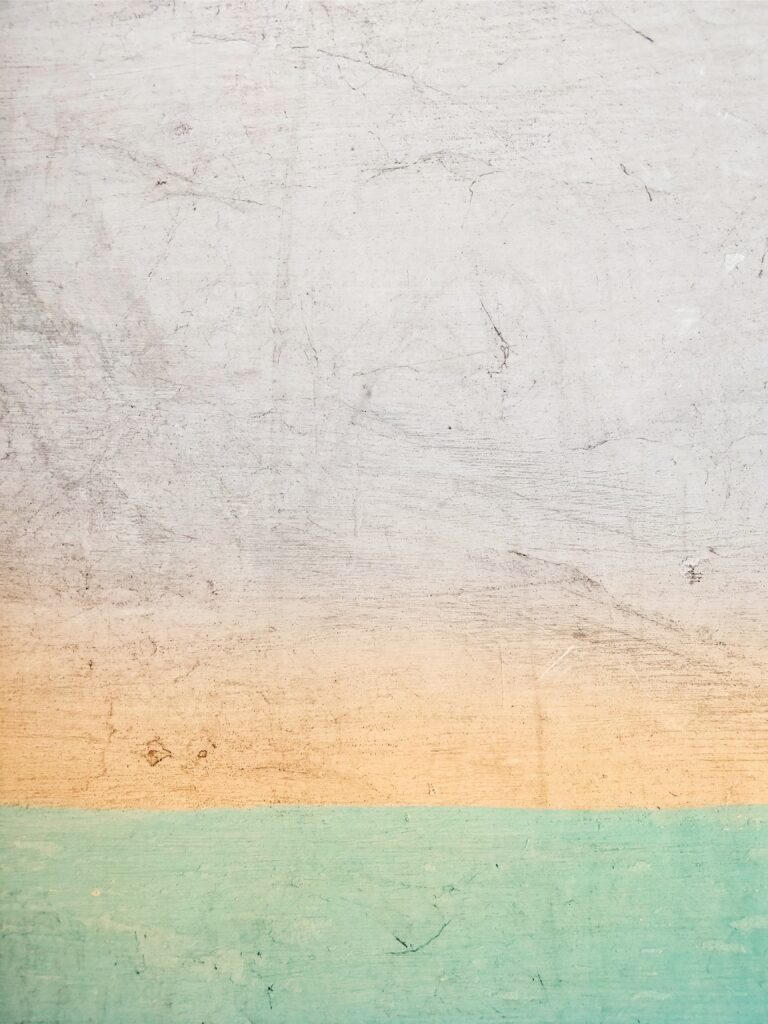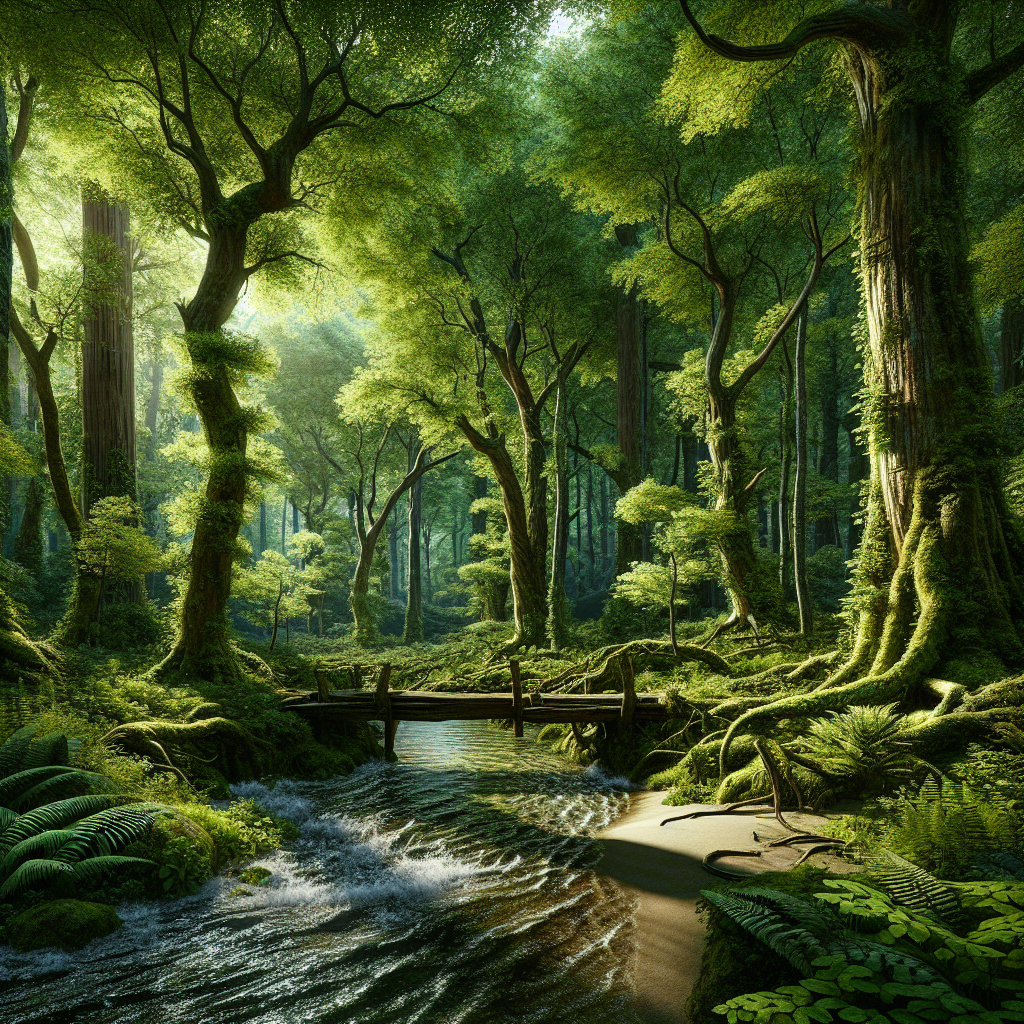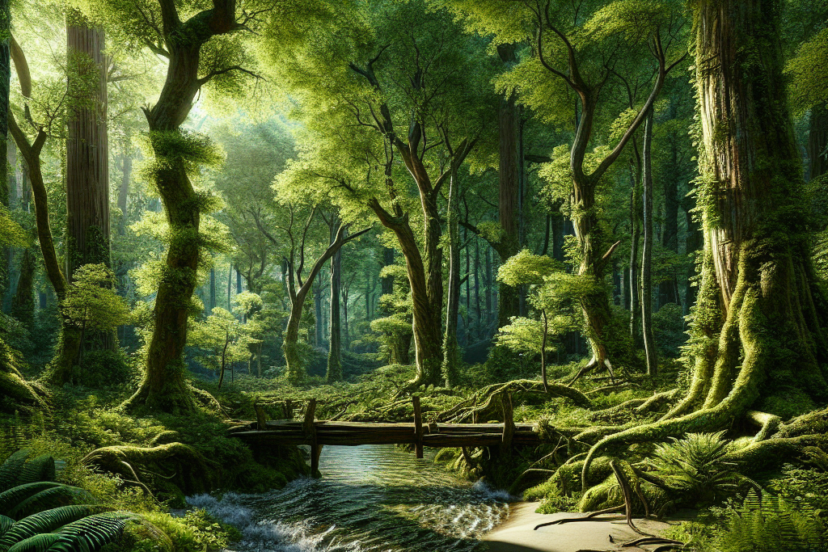What Is The Role Of Texture Mapping In Video Games?
Texture mapping plays a crucial role in the captivating visuals of video games, transforming flat, lifeless surfaces into realistic and immersive environments. By applying intricate and detailed textures to 3D models, texture mapping brings depth and realism to objects, landscapes, and characters within the game. Whether it’s the intricate patterns on a character’s clothing, the weathered cracks on ancient ruins, or the vibrant leaves on a tree, texture mapping breathes life into the virtual world, allowing players to get lost in the stunning visuals and enhancing their overall gaming experience.

Understanding Texture Mapping
Definition of Texture Mapping
Texture mapping is a crucial technique used in computer graphics and video game development to enhance the visual appearance and realism of objects and environments. It involves applying 2D images, called textures, onto 3D models to create the illusion of surface details, such as colors, patterns, and materials. By mapping a texture onto a polygonal surface, developers can bring their virtual worlds to life and immerse players in visually stunning and realistic environments.
Importance of Texture Mapping
Texture mapping is essential in video games as it contributes significantly to the overall visual quality and immersion of the gaming experience. Without proper texture mapping, objects and environments would appear flat and devoid of detail, resulting in a less convincing and engaging virtual world. Texture mapping enables developers to simulate a wide range of surface characteristics, including materials like wood, metal, or fabric, enhancing the overall realism and believability of the game world.
Types of Texture Maps
Diffuse Maps
Diffuse maps, also known as color maps, are one of the most commonly used texture maps in video games. They define the base color of an object or surface. By applying a diffuse map, developers can create a sense of depth and color variation, making objects and environments appear more visually appealing and realistic. Diffuse maps are particularly important in determining the overall appearance and hue of game assets.
Specular Maps
Specular maps determine how reflective or shiny a surface appears. By adjusting the highlights and specular reflections on an object, developers can simulate materials like glass, metal, or water more convincingly. Specular maps add a level of detail and realism to the game’s lighting and help create a more immersive experience.
Normal Maps
Normal maps provide the illusion of extra surface details by encoding information about the height and direction of the surface normals. By perturbing the normals of a 3D model, normal maps create the appearance of intricate details, such as bumps, grooves, or indentations, without adding additional geometric complexity. Normal maps play a vital role in enhancing the visual quality and realism of game assets.
Bump Maps
Bump maps are similar to normal maps but with fewer details. They create the illusion of surface relief by simulating small-scale bumps and depressions. Bump maps modify the lighting calculation for each pixel, resulting in the appearance of surface irregularities and subtler details. While not as detailed as normal maps, bump maps are still effective in adding texture to objects and improving their realism.
Reflection Maps
Reflection maps, also known as environment maps or cube maps, are used to simulate reflective surfaces like mirrors or water. By capturing the surrounding environment and mapping it onto the reflective object, developers can create realistic reflections and make the game world feel more immersive. Reflection maps add an extra layer of visual fidelity and contribute to creating visually stunning and dynamic environments.
Alpha Maps
Alpha maps, also referred to as transparency maps, control the opacity of certain areas of a texture. They determine which parts of an object or surface are fully visible, partially transparent, or completely invisible. Alpha maps are commonly used for creating realistic foliage, glass windows, or semi-transparent materials. They allow for more realistic rendering of complex and intricate objects within a game world.
Creating and Applying Textures
Texture Creation Process
The process of creating textures typically involves a combination of artistic skill and technical knowledge. Artists use specialized software, such as Photoshop or Substance Painter, to design and paint the textures, taking into account the desired color, surface details, and materials. Textures can be created from scratch or based on reference images or photographs. The goal is to create high-quality textures that effectively convey the desired visual characteristics for the game assets.
UV Mapping
UV mapping is a crucial step in the texture creation process. It involves unwrapping the 3D model’s surface onto a 2D plane, creating a UV map. This UV map serves as a blueprint for the texture, indicating how the 2D texture image should be applied to the 3D model. UV mapping can be a complex and time-consuming task, requiring careful consideration of the model’s topology and minimizing distortion or stretching in the UV layout. Proper UV mapping ensures that textures are seamlessly applied to the model and appear correctly in the game.
Applying Textures in Video Games
Once the textures are created and the UV mapping is complete, the next step is to apply the textures to the game assets. This is done within the game engine or 3D modeling software, where the textures are assigned to specific materials or surfaces of the 3D models. The game engine then renders the textured models in real-time, taking into account lighting, shading, and other rendering techniques, to create visually appealing and realistic graphics. The application of textures is a critical step in bringing the game world to life and providing players with an immersive visual experience.
Enhancing Realistic Rendering
Simulating Surfaces
Texture mapping plays a vital role in simulating various surface types in video games. By applying textures that accurately represent materials such as wood, metal, or fabric, developers can create visually convincing surfaces. Details like the grain of wood or the reflective properties of metal can be accurately portrayed, resulting in more realistic and immersive visuals. Texture mapping allows for a high level of fidelity in rendering the textures and materials of objects and environments, bringing them to life with depth and authenticity.
Adding Realism to Environments
Texture mapping also contributes to creating realistic environments in video games. By carefully choosing and applying textures that mimic natural elements like foliage, rocks, or terrain, developers can bring the game world closer to reality. The textures add visual depth and variation to the environment, creating a sense of immersion and making players feel like they are exploring a believable and captivating world. Realistic environments enhance the overall gaming experience and draw players deeper into the virtual world.
Improving Lighting Effects
Texture mapping is closely intertwined with lighting effects in video games. By capturing the way light interacts with different surfaces, textures can enhance the overall lighting simulations. Mapping textures that influence how light is reflected, scattered, or absorbed on a surface allows for more visually appealing and accurate lighting effects. Whether it is the subtle reflections on water, the scattering of light through foliage, or the shadows cast by intricate architectural details, proper texture mapping greatly enhances the visual impact of lighting in video games.
Creating Depth and Dimension
Texture mapping is instrumental in creating depth and dimension in video games. By incorporating textures that simulate surface details like bumps, grooves, or scratches, developers can give objects and environments a sense of tactility and realism. The interplay of textures and lighting creates the illusion of depth, making game assets appear three-dimensional and lifelike. The careful application of textures enables players to visually perceive and interact with the virtual world on a more immersive level.

Optimizing Performance
Reducing File Sizes
One of the challenges in texture mapping is the large file sizes of high-resolution textures. To optimize performance, developers often compress textures without sacrificing too much visual fidelity. Techniques like texture compression algorithms or formats, such as JPEG, PNG, or DDS, can significantly reduce file sizes while still maintaining a satisfactory level of visual quality. By keeping texture sizes optimized, game performances can improve, reducing load times and optimizing memory usage.
Streaming Textures
Streaming textures is a technique used in open-world games or large-scale environments, where textures are only loaded into memory when needed. Rather than loading the entire game world’s textures at once, textures are delivered to the graphics card dynamically based on the player’s position and line of sight. This approach helps manage memory resources efficiently and ensures that only relevant textures are present in memory, improving overall performance and reducing strain on system resources.
Mipmap Generation
Mipmapping is a technique used to optimize texture rendering by creating progressively smaller versions of a texture. These smaller versions, called mipmaps, are precomputed and stored alongside the original texture. When textures are rendered at a distance or reduced in size, the corresponding mipmap is used, reducing the computational load and optimizing performance. Mipmaps help prevent texture aliasing and increase the visual quality of distant or scaled-down textures, enhancing the overall gaming experience.
Texture Compression Techniques
Texture compression techniques are crucial in minimizing memory usage and improving performance. These techniques involve reducing the amount of data needed to represent a texture while still maintaining an acceptable level of visual quality. Methods like block-based compression algorithms or GPU-specific compression formats, such as BC1, BC2, BC3, or ASTC, effectively reduce the memory footprint of textures. Texture compression plays a significant role in optimizing performance, particularly on lower-end hardware or platforms with limited memory bandwidth.
Texture Mapping and Artistic Expression
Unifying Visual Style
Texture mapping plays a critical role in unifying the visual style of a video game. By applying consistent textures across objects and environments, developers can create a cohesive and aesthetically pleasing game world. Whether it’s a gritty post-apocalyptic setting or a vibrant and colorful fantasy realm, texture mapping allows developers to establish and maintain the desired visual style throughout the game, creating a memorable and immersive experience for players.
Setting the Mood
Textures are powerful tools for setting the mood and atmosphere in video games. By choosing textures that evoke a particular emotion or reflect the narrative, developers can enhance the storytelling and player experience. Dark and foreboding textures can create tension and suspense, while bright and vibrant textures can convey a sense of joy and wonder. Texture mapping effectively communicates the intended mood, contributing to the overall immersive nature of the game world.
Telling Stories
Textures can be used to tell stories within video games. By incorporating textures that contain visual cues, symbols, or narrative elements, developers can convey information about the game world, its history, or the characters’ past. Murals, graffiti, or weathered signs can provide hints or clues, enriching the player’s understanding of the narrative and creating a more engaging and interactive storytelling experience. Texture mapping is an essential tool for weaving visual narratives within the game world.
Creating Immersive Environments
Texture mapping is crucial in creating immersive environments that captivate players. By paying attention to details like weathering, wear and tear, or subtle imperfections in textures, developers can make the game world feel more realistic and lived-in. The careful application of textures on objects and surfaces can transport players into a world that feels tangible and authentic. Immersive environments allow players to suspend disbelief and fully immerse themselves in the virtual world, enhancing their gaming experience.

Texture Mapping Challenges
UV Stretching and Distortion
One of the challenges in texture mapping is the distortion or stretching of textures due to the 3D model’s topology. When UV mapping is not done carefully, textures can appear distorted, stretched, or skewed, resulting in visual anomalies or artifacts. UV stretching can warp the intended design and compromise the texture’s visual quality. Developers need to pay attention to UV layout and topology to minimize these issues and ensure that textures appear correctly on the 3D models.
Seams and Texture Artifacts
Seams or visible edges between texture sections can occur when textures are not seamlessly applied or tiled. These noticeable transitions can break the immersion and distract players. Texture artifacts, such as visible seams, color discrepancies, or texture blurring, can occur due to compression or rendering techniques. Eliminating these issues requires meticulous attention to detail, proper UV mapping, and careful texture setup to ensure a seamless and visually pleasing appearance.
Texture Memory Limitations
Texture memory limitations can pose challenges in video game development. High-resolution textures demand significant memory resources, limiting the number of textures that can be loaded simultaneously. Developers need to optimize texture sizes, utilize compression techniques, or employ streaming methods to manage memory efficiently. Balancing visual quality with memory constraints is crucial in providing a smooth and immersive gameplay experience across a wide range of hardware configurations.
Maintaining Consistency
Texture mapping requires consistency across different game assets and environments. Maintaining a consistent visual style, color palette, or level of detail is crucial in creating a cohesive and believable game world. Inconsistencies in texture quality, artistic style, or material representation can disrupt immersion and detract from the overall visual experience. Developers need to pay attention to the texture choices, ensuring that they align with the intended visual style and contribute to a unified and consistent game world.
Future Developments in Texture Mapping
Procedural Texturing
Procedural texturing is an emerging technique that allows for the generation of textures algorithmically. Instead of relying solely on handcrafted textures, developers can use mathematical functions and procedural algorithms to create textures. Procedural texturing offers infinite variations, reduces storage requirements, and enables more dynamic and reactive textures. This technique has the potential to revolutionize texture mapping by providing more flexibility, scalability, and procedural generation possibilities in the future.
Real-Time Ray Tracing
Real-time ray tracing, also known as ray tracing rendering, is a cutting-edge technology that has the potential to redefine the visual quality of video games. By tracing the path of light rays in real-time, developers can achieve highly realistic lighting, reflections, and refractions in game environments. Ray traced textures can enhance the visual fidelity, realism, and immersion of video games, creating more lifelike graphics. As hardware and software advancements continue, real-time ray tracing is poised to become a standard feature in future video games.
Virtual Reality and Augmented Reality
Texture mapping will play a crucial role in the future of virtual reality (VR) and augmented reality (AR) experiences. These immersive technologies require highly detailed and realistic textures to create believable and engaging virtual worlds. As VR and AR platforms continue to evolve, the demand for higher-resolution textures, improved shading, and more accurate mapping techniques will increase. Texture mapping will be instrumental in creating visually stunning and immersive experiences for VR and AR users.

Conclusion
Texture mapping is a fundamental technique in video game development that enhances the visual quality, realism, and immersion of game assets and environments. Through the careful application of various texture maps, developers can simulate a wide range of surface characteristics, create visually appealing and realistic environments, and enhance the overall gaming experience. Texture mapping also presents challenges, such as UV stretching, seams, and texture memory limitations, but advancements in technology, such as procedural texturing and real-time ray tracing, offer exciting possibilities for the future of texture mapping in video games. Ultimately, texture mapping is an essential tool for artists and developers to express their artistic vision, craft immersive worlds, and transport players into captivating and visually stunning gaming experiences.




